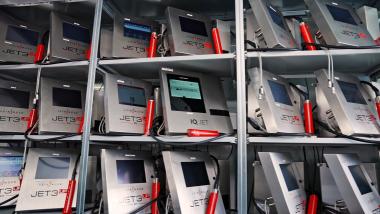BVMed unterstützt Lauterbach bei Fristverlängerung zur Wundversorgung
Der Bundesverband Medizintechnologie (BVMed) unterstützt die Empfehlung von Bundesgesundheitsminister Karl Lauterbach, die bisher gültigen erstattungsrechtliche Regeln zur Verbandmitteldefinition bis zum 2. März 2025 zu verlängern. Die aktuell geltende Frist läuft am 2. Dezember 2024 (heute) aus. Lauterbach wendete sich mit seiner Empfehlung in einem Schreiben vom 29. November 2024 an den GKV-Spitzenverband (GKV-SV), die Kassenärztliche Bundesvereinigung (KBV) und die Bundesvereinigung Deutscher Apothekerverbände (DAV), wie der BVMed berichtet. BVMed-Geschäftsführer und Vorstandsmitglied Dr. Marc-Pierre Möll: „Es ist gut, dass sich Minister Karl Lauterbach der Sache persönlich annimmt. Durch die empfohlene Fristverlängerung könnten wir Versorgungslücken für chronisch kranken Patient:innen mit Wunden schließen und damit erhebliche gesundheitliche Folgen für Betroffene vermeiden“.
Hintergrund ist, dass noch bis zum 2. Dezember 2024 für die sogenannten „sonstige Produkte zur Wundbehandlung“ eine Übergangsfrist gilt, in der sie ohne konkreten Nachweis des therapeutischen Nutzens in der Gesetzlichen Krankenversicherung (GKV) verordnungs- und erstattungsfähig waren. Nach dem Ende der Frist müssen die Hersteller der betroffenen, unter anderem antimikrobiell wirkenden silber- oder polyhexanid-haltigen Wundauflagen oder Hydrogele, deren medizinische Notwendigkeit und den therapeutischen Nutzen beim Gemeinsamen Bundesausschuss (G-BA) nachweisen. Dies kann aber wegen der fehlenden Bewertungskriterien und einem laufenden Verfahren des IQWiG zu den geforderten Studiennachweisen aktuell nicht erfolgen. Erst wenn der Nutzen auf Basis dieser durch klinische Studien positiv nachgewiesen werden konnte, werden die Wundauflagen als „sonstige Produkte zur Wundbehandlung“ in die Anlage V der Arzneimittel-Richtlinie aufgenommen und sind dann weiter in der GKV erstattungsfähig.
Gesundheitspolitiker:innen des Bundestages und des Bundesrates sowie das Bundesgesundheitsministerium hatten in den letzten Monaten bereits eine Fristverlängerung um 18 Monate konsentiert, die über einen Änderungsantrag an das laufende Gesetz zur Stärkung der öffentlichen Gesundheit angehängt werden sollte. Lauterbach erklärt in seinem Schreiben vom 29. November 2024, dass diese geplante gesetzliche Änderung nicht mehr vor dem 2. Dezember 2024 vom Deutschen Bundestag beschlossen werden konnte. Es sei dem Bundesministerium für Gesundheit (BMG) jedoch „ein wichtiges Anliegen“, dass die Umsetzung der technischen Voraussetzungen zeitnah und geordnet vollzogen werden kann. Daher empfehle das BMG eine Fristverlängerung bis zum 2. März 2025. Der BVMed unterstützt die Empfehlung: „Nach dem Aus der Ampelregierung besteht dringender Handlungsbedarf, um das für die Wundversorgung und die Anwender:innen wichtige Vorhaben umzusetzen“, so Möll.
Bundesverband Medizintechnologie (BVMed)































